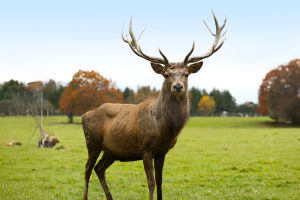New To Oil Painting?
Stepping into the world of oil painting is an exciting experience, Lykkers! Rich in tradition and technique, oil painting has captured the imagination of artists for centuries.
Whether you're brand new or just starting to explore this medium, learning a few key points can help set the foundation for creating beautiful and lasting artwork. Here’s a clear, friendly guide to get you started without feeling overwhelmed.
Understanding the Background of Oil Painting
A Technique Rooted in Artistic Evolution
Oil painting has played a key role in the history of art, shaping how artists express light, detail, and emotion on canvas. It gained popularity in the 15th century through the innovative work of artists in Northern Europe, especially Jan and Hubert Van Eyck.
These pioneers developed a method of using oil-based pigments that allowed for smoother blends and deeper color ranges.
Why It Flourished in Certain Regions
This painting method spread widely, especially in areas where the environment made other painting methods less durable. In cities like Venice and Paris, the technique quickly gained favor for its flexibility and resilience, becoming the go-to method for large artworks.
From Studio to Canvas
Oil paints were ideal for large-scale works. Artists could complete their pieces in studios and later transport them for display. This versatility helped oil painting become dominant for centuries, from the Renaissance to modern-day practices.
Getting to Know Your Tools and Materials
The Magic of Oil Colors
Oil paint is made by mixing powdered pigment with plant-based oils like linseed or safflower. This results in a creamy texture that dries slowly, giving artists time to work with precision. Over the years, artists learned to blend their own unique shades by grinding pigments and mixing them by hand—an art in itself.
Types of Oil Used in Paints
Each type of oil affects the drying time and appearance:
- Linseed oil: Popular for its strong binding power and smooth finish, though it tends to yellow over time.
- Safflower oil: Preferred for lighter colors because it yellows less, though it dries slowly.
- Walnut oil: Slightly darker and used for restoration or richer tones.
Solvents and Their Role
Solvents help thin the paint and are especially useful during the early stages of painting. Natural options like turpentine blend well with oils and can speed up drying without dulling the color. Others, like petroleum-based solutions, work quickly but may affect the paint's final look. It’s important to use them sparingly to avoid faded patches.
Choosing the Right Brushes
Brush Types and Materials
The brush you choose depends on the style you want to achieve. For strong, textured strokes, stiff bristles made from natural fibers or modern synthetics are ideal. For gentle blending and detail work, softer brushes are preferred.
Shapes and Uses:
- Flat brushes: Great for covering large areas.
- Round brushes: Useful for detailed work.
- Filbert brushes: A versatile option for both broad and fine strokes.
- Fan brushes: Ideal for soft textures like grass or hair.
Brush Maintenance
After painting, clean brushes thoroughly to keep them in good shape. Instead of using harsh solvents, consider wiping them with a damp cloth or cleaning with a specialized plant-based soap that helps maintain flexibility. Always dry brushes upright or with protective covers to keep their shape intact.
Painting With Confidence
Perfect for Beginners
Although it may seem advanced, oil painting is actually very forgiving. Its slow drying time means you can adjust and rework sections as needed, making it a fantastic option for those still learning.
Practice Is Key
Improvement comes through consistent effort. Results may not be perfect at the beginning, but with time and dedication, skill will naturally grow. Patience and persistence are far more important than natural talent.
Stay Inspired and Keep Going
Don’t compare early work with masterpieces. Every artist starts somewhere, and progress is part of the journey. Enjoy the process, try new techniques, and celebrate your growth along the way.
Final Thoughts
Oil painting offers depth, brilliance, and a wide range of creative possibilities. By understanding its origins, learning about the right tools, and developing proper habits, Lykkers can begin their artistic path with confidence. Let your creativity flow, explore the beauty of the medium, and most of all—keep painting!
-
 Penguin Warm TricksHow Do Penguins Stay Warm in Freezing Antarctica? Their Survival Secrets Will Amaze You!
Penguin Warm TricksHow Do Penguins Stay Warm in Freezing Antarctica? Their Survival Secrets Will Amaze You! -
 Antlers: Nature’s MiracleDeer Antlers Grow Faster Than You Think—Here’s the Mind-Blowing Truth!
Antlers: Nature’s MiracleDeer Antlers Grow Faster Than You Think—Here’s the Mind-Blowing Truth! -
 Stay Smart ChoicesHotel, Hostel, or Airbnb? How to Pick the Best Stay for Different Travelers and Travel Styles!
Stay Smart ChoicesHotel, Hostel, or Airbnb? How to Pick the Best Stay for Different Travelers and Travel Styles!
Copyright © zogu 2021 - 2025. All Right Reserved.